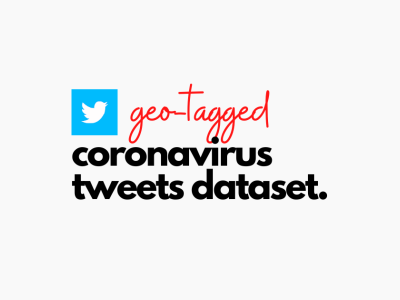Partial Shading and Fault Simulation Dataset of Photovoltaics Module

- Citation Author(s):
-
Nathaniel Ruppert (Computer Engineering Program, California state University, Fullerton, CA 92831)
- Submitted by:
- Rakeshkumar Mahto
- Last updated:
- DOI:
- 10.21227/fjbq-0321
- Data Format:
- Research Article Link:
 2071 views
2071 views
- Categories:
- Keywords:
Abstract
According to recent statistics released by the California Department of Forestry and Fire Protection (CAL FIRE), in the year 2020, 8112 fire incidents were reported, resulting in damaging approximately 1.4 million acres of land in California [1]. These frequent forest fires result in damaging the economy, environment, flora, and fauna of the affected area.
Due to forest fire’s vast impact, many techniques are developed for detecting forest fire [2]–[4]. Compared to all the techniques, drones-based forest fire detection, search, and rescue have garnered much interest among researchers due to their ability to cover a vast area, ease of use, and ability to support different kinds of sensors [5]–[7]. For drones to be effective, they need to have a prolonged flight time and be rugged to operate in hazardous conditions. According to[8], for powering a drone, gallium-basedmultijunction solar cells are the most efficient since they provide the best power-to-weight ratio. Additionally, it is shown in [9]that transistor-embedded solar cells can create a smarter and more resilient power source.
Recently, Sood et al. published a paper showing the effectiveness of Machine Learning in identifying the number of solar cells in the panel under shade [10]. However, besides partial shading, there are other types of aberrations that a solar powered micro-autonomous drone needs to consider while operating in harsh environments. In severe operating conditions, physical damage to solar cells in the panel, open/short circuit fault, and other kinds of faults can make the micro-autonomous drone nonfunctional. The dataset presented is an extension of the research work presented in [10], where silicon-based solar cells are used which have a lower efficiency for powering drones. The dataset presented, uses an equivalent circuit model to simulate gallium-based multijunction solar cell performance in different shading and faulty conditions at different temperatures. The raw dataset is generated using a combination of LTSPICE and Python.
References
[1] “Welcome to Stats & Events.” https://www.fire.ca.gov/stats-events/ (accessed Dec. 30, 2020).
[2] M. Naderpour, H. M. Rizeei, N. Khakzad, and B. Pradhan, “Forest fire induced Natech risk assessment: A survey of geospatial technologies,” Reliab. Eng. Syst. Saf., vol. 191, p. 106558, Nov. 2019, doi: 10.1016/j.ress.2019.106558.
[3] A. A. A. Alkhatib, “A Review on Forest Fire Detection Techniques,” Int. J. Distrib. Sens. Netw., vol. 10, no. 3, p. 597368, Mar. 2014, doi: 10.1155/2014/597368.
[4] V. Chowdary and M. K. Gupta, “Automatic Forest Fire Detection and Monitoring Techniques: A Survey,” in Intelligent Communication, Control and Devices, Singapore, 2018, pp. 1111–1117. doi: 10.1007/978-981-10-5903-2_116.
[5] D. Kinaneva, G. Hristov, J. Raychev, and P. Zahariev, “Early forest fire detection using drones and artificial intelligence,” in 2019 42nd International Convention on Information and Communication Technology, Electronics and Microelectronics (MIPRO), 2019, pp. 1060–1065.
[6] J. Paneque-Gálvez, M. K. McCall, B. M. Napoletano, S. A. Wich, and L. P. Koh, “Small drones for community-based forest monitoring: An assessment of their feasibility and potential in tropical areas,” Forests, vol. 5, no. 6, pp. 1481–1507, 2014.
[7] C. Yuan, Y. Zhang, and Z. Liu, “A survey on technologies for automatic forest fire monitoring, detection, and fighting using unmanned aerial vehicles and remote sensing techniques,” Can. J. For. Res., vol. 45, no. 7, pp. 783–792, 2015.
[8] L. F. Lester et al., “Flexible solar cells for micro-autonomous systems technology,” in Micro-and Nanotechnology Sensors, Systems, and Applications II, 2010, vol. 7679, p. 76790Y.
[9] R. Mahto, “Fault resilient and reconfigurable power management using photovoltaic integrated with CMOS switches,” 2016.
[10] K. Sood, R. Mahto, H. Shah, and A. Murrel, “Power Management of Autonomous Drones using Machine Learning,” presented at the IEEE SusTech, Long Beach, CA, Apr. 2021.
Instructions:
The equivalent photovoltaics (PV) cell model uses 2-diode based model has following parameters
Area of PV cell = 49 cm2
VOC = 1.025V
ISC = 30.5mA/cm2
IS1 = 0.16 aA/cm2
IS2 =1.2 pA/cm2
RS= 28mΩ
RP =100KΩ
The total number of PV cells in the panels is 10. The different configurations of PV cells in the panel are 1x10, 2x4, 2x5, 3x3, 4x2, 5x2, and 10x1. The temperature varies from 20 to 50 degrees Celsius, and partial shading condition ranges from 500 to 900 W/m2. Overall the dataset consists of 6,965,234 different scenarios.







